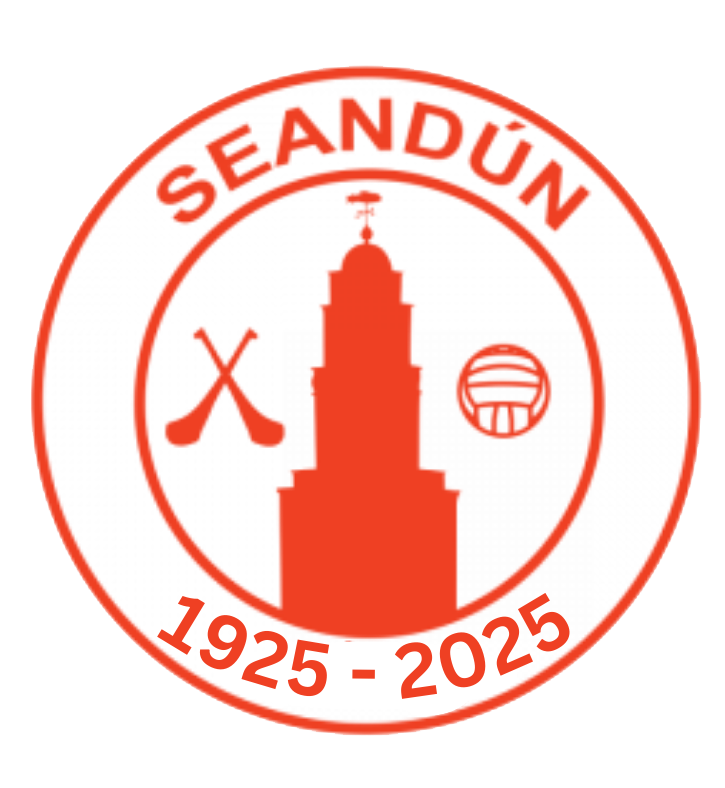About Seandún GAA
Seandún GAA is a Hurling & Gaelic Football Division in the City of Cork. We are one of eight Divisions of Cork County Board.
We organise competitions for Junior teams within the Division. The winners of these competitions compete against other divisional champions to determine which club is the county champion. The following Clubs compete under Seandún GAA:
BALLINURE
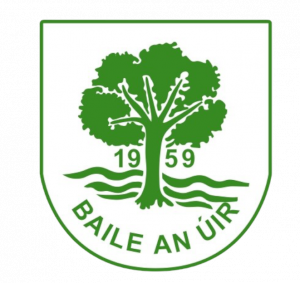
Coming Soon
BALLYPHEHANE
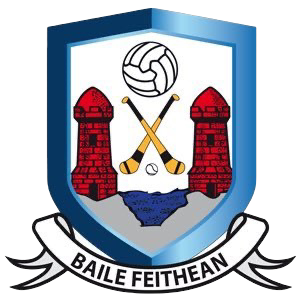
Coming Soon
BISHOPSTOWN
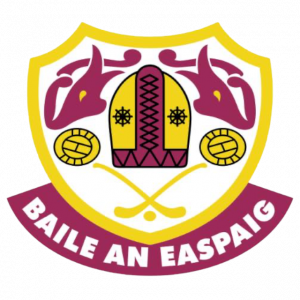
In 1889, a GAA club called the Campaigners was formed in the Bishopstown area. Their existence was short-lived; they disbanded in 1890. The Campaigners name indicates that the club members supported the politics of William O Brien of Mallow, then a Member of Parliament. He was the leader of the United Irish Party, and favoured the O’ Brien Board of the GAA rather than the official County Board. The club was founded after the Glasheen Club had merged with the St Finbarrs Club the previous year. Some members of the Glasheen club, instead of playing with the Barrs, decided to set up the Campaigners Club.
Meetings were held in the upper room of the Bishopstown Bar weekly. Membership at the time was 3 old pence a week. In 1958, a hurling team was entered in the Junior C League which they won. However, there were no trophies for this particular league.
Since their formation in 1957, it took until 1969 before they managed to win their first hurling title, the MacCurtin Cup. 1971 saw Bishopstown land their very ‘A’ grade trophy. Amid huge excitement, they won the City Division Junior A Football Championship for the first-time, beating Nemo Rangers. 1992 was the year when Bishopstown became a dual senior club.
Bishopstown now has over 2000 members with huge underage numbers and it continues to grow year on year!
BLACKROCK

Coming Soon
BRIAN DILLONS

Coming Soon
DELANYS
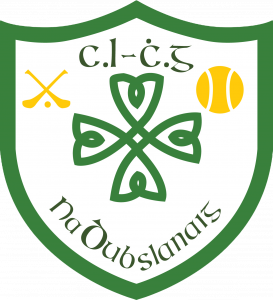
Delanys GAA is a GAA club based on the northside of Cork city, and draw their players from the Dublin Hill area. Teams are fielded in Gaelic football, hurling, ladies Football and camogie. The club participates in Cork GAA &LGFA competitions and in Seandún board competitions. Founding members were Will O’Sullivan and Tom McCarthy.
The club is named after brothers Jeremiah and Cornelius Delaney, killed by British forces at their home at Dublin Hill on the night of 11–12 December 1920 (the night of The Burning of Cork). The two brothers were members of F Company, 1st Battalion, Cork No. 1 Brigade, I.R.A.
Achievements:
- Cork Intermediate Hurling Championship Winner (1) 2002 Runners-Up 1997
- Cork Junior Hurling Championship Runners-Up 1982
- Cork Junior Football Championship Winners (1) 1955 Runner-Up 1951
- Cork Minor B Football Championship Winners (1) 1986 Runners-Up 1988, 1989
- Cork City Junior Hurling Championship Winners (5) 1974, 1980, 1982, 1986, 1988 Runners-Up 1971, 1972, 1991
- Cork City Junior Football Championship Winners (6) 1954, 1955, 1977, 2015, 2017, 2018 Runners-Up 1951, 1980, 2016
DOUGLAS
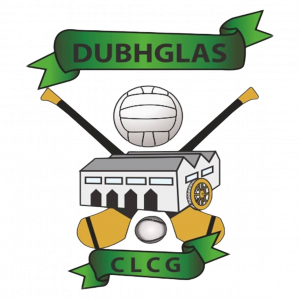
A hurling team representing Douglas was first included in the draw for the Cork County Senior Hurling Championship in 1887. From 1914 to 1918 there was no mention of a Douglas team being fielded and in 1918 the Castletreasure Club came into being. On April 15th, 1922 Castletreasure brought a County Intermediate Hurling title to the parish when they defeated Inniscarra in the county final. Following the breakup of the Castletreasure Club in 1926, there was no club in the parish and St. Columbas club was formed. The club colours were a black jersey with single green band.
In 1938 the club was renamed to Douglas Hurling and Football Club and in the same year the club purchased Pitch 1, which we still use today. In the early years Hurling was the most popular sport and football only came to prominence in the 1950s. In 1962 Douglas defeated Midleton to win the County Junior Football title, a win credited to a strong underage structure. From 1962 to 1965 Douglas played senior football, until demoted to Intermediate grade. Football continued to go downhill, and the club ended back at Junior grade in 1968. Douglas won their first hurling title in 1966 defeating hot favourites Mayfield in the City Championship final.
Douglas had Five Glorious Years of Football – 1970 to 1974 winning multiple City Division Junior Championship and league football titles including the double in 1973.Between 1979 and 1986 Douglas played in five hurling finals, the highlight winning the Junior A and B City Championship v Na Piarsaigh in 1983 and the regrading to Intermediate in 1985 for the first time in 30 years.
Throughout the years various committees and members worked hard to develop facilities and playing fields. Pitch 1 was purchased in 1938, pitch 2 was purchased in the eighties and re-developed in 2014, the current bar and clubhouse was opened in 1982, the indoor hall was opened in 1998, new dressing rooms and a gym were opened in the 2002, and Pitch 3 was opened in 2019.
The first attempt at organizing Street Leagues was 1955 and in 1978 the club set up the first independent Street Leagues committee. The leagues at U5 to U11 have proved to be an outstanding success and this together with a strong connection with local schools have guaranteed a steady stream of young players which ultimately guarantees the future of GAA in Douglas.
The current club colours date back to the early 1950’s, when having one set of jerseys for 4 teams the club managed to negotiate a second set from Sunbeam for a bargain at £12. The colour of that set of jerseys is what we wear today.
Douglas now plays at Senior grade in both hurling and football and while we haven’t yet won a county senior title in either code there are regular underage county titles and we have had many notable successes at adult level in the last 15 years:
- 1997-Premier Intermediate Football champions.
- 2009-Premier Intermediate Hurling champions.
- 2015-Cork Minor Hurling Champions.
- 2013-County Minor Football champions.
- 2016-County U21 Hurling champions.
- 2017-County U21 Football champions.
- 2019-County Minor Football champions.
GLEN ROVERS
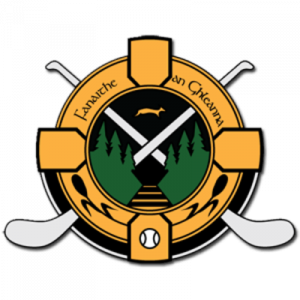
Glen Rovers was founded in 1915. In the very early years the club played both hurling and football and reached the Minor County Football final of 1919. Like most clubs of that time Glen Rovers did not have a regular field to practice on. The team regularly trained on a patch of ground near the railway line off Spring Lane in Blackpool.
In the early years of the 1920s two important events occurred that proved to be a huge boost to the club. The first of these was the decision of the Thomas Davis Boys Hurling Club to join Glen Rovers. Along with an influx of young players this move also brought Paddy O’Connell into the club. His contribution to Glen Rovers was so great that he earned the nickname, “The Father of the Glen”.
The second event was the decision to formally join with the local St Nicholas Football club, many of whose members were already playing hurling with the Glen. This move also brought Tom O’Reilly into the club. O’Reilly would spend thirty years as chairman of both clubs. During that time Glen Rovers won 20 senior hurling county titles and St Nicks won five senior football championships.
Glen Rovers won the Junior County championship in 1924 and followed this by winning the Intermediate title in 1925. The club entered the senior ranks in 1926 and have remained there since. Since earning senior status Glen Rovers have won the County Senior Hurling Championship 27 times, the Munster Club Senior Hurling Championship 3 times and the All-Ireland Senior Hurling Club Championship twice.
These successes were backboned by great administrators and players. Some of hurling’s greatest players have starred for Glen Rovers in the club’s many successes. These include the legendary Christy Ring, former Taoiseach Jack Lynch, Paddy “Fox” Collins, Dr Jim Young, Din Joe Buckley, Vincie Twomey, Joe Hartnett, Denis Coughlan, Martin O’Doherty, Tomas Mulcahy, Seanie McGrath and most recently Patrick Horgan.
Five Glen Rovers’ players have captained Cork to win the All-Ireland senior hurling title. They are, Connie “Sonny” Buckley (1941) , Jack Lynch (1942), Christy Ring (1946, 1953, 1954), Martin O’Doherty (1977) and Tomás Mulcahy (1990).
While the Glen Rovers senior team and players blazed a trail through the pages of hurling history, the club’s junior team have always been competitive in the Seandun Division. The club won its first Seandun JHC title in 1929 and now sit on top of the Roll of Honour with 17 JHC titles in the 96 year history of the competition.
Glen Rovers remain the focus of the community in the greater Blackpool area. From hurling on the wasteland beside the railway line over 100 years ago, the club have developed a modern complex off Spring Lane. There are four pitches, one floodlit, training hall and gym and indoor and outdoor hurling alleys. Glen Rovers field four adult teams and compete at every underage level where the players are recruited from very successful annual Street Leagues.
It is the ambition of every player who wears the famous Green Black and Gold jersey of Glen Rovers to emulate the success of the players who have gone before them and in doing so to uphold the proud hurling traditions and success of our club, our division and our county.
LOUGH ROVERS
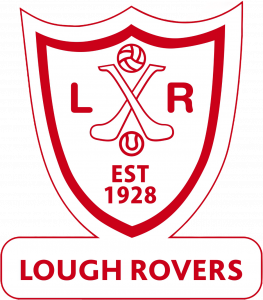
Coming Soon
MAYFIELD
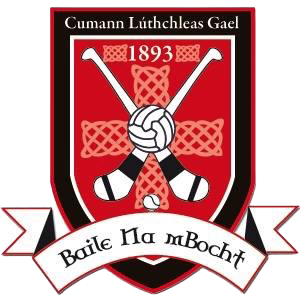
Mayfield GAA Club (CLG Baile na mBocht) is located in the Mayfield area of Cork City, Ireland. Teams are fielded in Gaelic football, hurling, and Ladies’ Football. The Club participates in Cork GAA competitions and in Seandún board competitions. The Club competes at Intermediate level in football and Junior ‘A’ level in hurling. Boys and girls from Academy, juvenile to adult level are catered for. Our pitches are located at Lotabeg in Mayfield and the clubhouse is located on Kerry Road.
Club Foundation
Mayfield GAA Club was formed in 1893, with Michael Fleming as the first secretary of the club. The club competed at both Minor and Junior level in the early years making their presence known with splendid victories in various feiseanna and tournaments that they had been invited to. The club entered a trial period of merging with local clubs, Brian Dillons and Sarsfields in 1903 to form a senior team. However, following various arguments and quarrels between members of each club, the trial period ended and each club went back to representing their respective areas.
The Club’s progress was halted somewhat following World War I, along with many other clubs throughout the country as the members and players were constantly harassed and subsequently arrested by the British Forces. Another amalgamation was attempted between local clubs in the Mayfield and surrounding are in 1922. Although on this occasion, Mayfield declined to merge due to the failed attempt at amalgamation in 1903.
1920’s – 1960’s
Mayfield affiliated with the newly established City Division Board in the 1920’s and made great progress in this decade, culminating in the winning of the City Division Junior Hurling Championship for the first time in 1935. The Club retained these titles in the three years that followed. The 1935 Cork Junior Hurling Championship final between Mayfield and Castlemartyr, became famous in that this final was played four times and never brought to conclusion. The Cork County Board decided that no medals would be presented and both teams were suspended. Following the victories of the 1930’s, many players retired from hurling which led to a lean period on the playing field. 1954 saw the first Mayfield Junior Football Team being entered into the City Division Junior Championship and League. This team did not have to wait too long for success, as in 1959, they tasted success in the City Division Junior ‘A’ Football Championship, beating St. Nicholas’ in the final.
In 1962, the Club moved the clubhouse to its present day location on Kerry Road. The club tasted success in hurling in the City Division Junior ‘A’ Hurling Championship in 1967, after a 32 year gap. The success of the Club’s underage structure was beginning to show as many of these players had begun with the Club in Street League competition ten years previous. Thy reached the County Final in 1969, but ultimately came up short against an excellent Kanturk side in what was a magnificent final.
1970’s – 1980’s
The 1970’s proved to be the most successful period in the history of Mayfield GAA Club. This decade saw Mayfield claim a total of 18 titles at adult level across both codes, the most important of which being the Club’s County Final victory in hurling on November 5th, 1978. This famous victory over a fancied Carrigtwohill side remains the only victory by a Mayfield team in an adult level County Final. Unfortunately, this victory did not lead to greater times on the field and Mayfield experienced another lean period in the 1980’s.
1990’s Onwards
The 1990’s saw the club experience a revival in fortunes. A major restructuring of the underage section under the leadership of Juvenile Chairman Seán McCarthy began to pay dividends, and the club won the Minor ‘A’ Championship in football and hurling in 1994, 1995 and 1996. A City Division Junior ‘A’ Football Championship followed in 1997, as well as the Junior ‘A’ Hurling Championship in 1999. Under the stewardship of Club Chairman John Brennan, major developments of the Club’s facilities took place. These included the complete upgrading of existing pitches at Lotabeg and the addition of two new pitches across the road. This also included the total refurbishment of our clubhouse on Kerry Road. In January 2002, a new complex was built at our grounds at Lotabeg which comprised of an ultra-modern gym, a multi-purpose sports hall, a 400 seat viewing stand over the main pitch, and new dressing rooms. This new complex which is open to all members of the community makes our club one of the most advanced in terms of facilities in the county. In January 2004, Cork County Board recognised the successful performances at Junior Football level over the previous few years and regraded the club to Premier Intermediate Football Status.
Mayfield GAA Club was thrust into national spotlight in 2008 when they were nominated to partake in a prime-time reality TV series on RTÉ called “Celebrity Bainisteoir”. The series involved various celebrities taking over as coaches of local Gaelic football teams and competing against each other. The Celebrity Bainisteoir for Mayfield was celebrity solicitor Gerald Kean. This opportunity gave the club incredible exposure and showed the club and its facilities in a positive light. It also gave our players a fantastic opportunity to test themselves against teams from other counties. The club progressed to the final of the competition by beating Crumlin of Dublin and Kiltimagh of Mayo in what were two great days at our GAA grounds. However, the club was beaten in the final of the competition by a very strong Maryland team from Westmeath.
In recent years, Mayfield GAA Club has experienced mixed fortunes on the field at adult level. In 2012, our intermediate footballers were relegated from the Premier Intermediate level down to Intermediate level. This was a disappointing result for the club as it had done well in previous seasons at that level and had claimed victory in the Tom Creedon Cup in the very same year. 2010 and 2011 saw Mayfield win the City Division Junior ‘A’ Hurling Championship, beating local rivals Brian Dillons both years. In 2011, the club reached the final of the Cork County Junior ‘A’ Championship, losing narrowly to Charleville after a replay.
Further redevelopment of our pitches at Lotabeg began in 2014. The small pitch next to our main pitch was sold and the funds received were used to redevelop the pitches across the road to include a sand-based pitch. The future of Mayfield GAA Club is bright when we consider the success of the Club at juvenile level over the past decade. Participation in Féile na nGael tournaments, as well as County Final victories at Fé14 and Fé16 level in 2004 and 2006 respectively. In 2015, the underage coaching structure of the Club received a huge boost when it was awarded Category Silver in the Lee Coaching Initiative, which recognises excellence in coaching standards at underage level.
2017 was a historic year for the club when our Junior Hurlers won County, Munster and All Ireland honours defeating Mooncoin after an epic battle in Croke Park.
NA PIARSAIGH
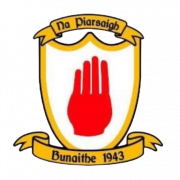
In 1943 a group of young men drawn from the famed hurling nursery of North Mon laid the foundations of Cumann Iomana & Peile Na Piarsaigh. In choosing a name for the club the members at the time sought one which would reflect their aims and ideals. Padraig Pease, it was felt, because of his undying love of Ireland and all things Irish, reflected those ideals admirable, thus the name “Na Piarsaigh” was adopted.
Later in 1951, the symbolic red hand of Ulster with severed thumb was selected as the club crest. The red hand represents the island of Ireland, the severed thumb our six counties, the legend is that when Ireland is united the thumb will again rejoin the fingers to create a strong and useful hand. Donnacha O Murchu was the first Uachtaran and was a teacher.
By 1946, the membership had grown from 30 to 70 but as a club had failed to win a title in either hurling or football. However, in that same year the City Division Junior Hurling Championship was won, a historic first and no mean achievement in three years of existence. As the club grew and expanded in the late forties the need for a playing field of our own was greatly impending the advancement of our teams. Six years later when after hard years of fund raising the club purchased a field at The Commons, Fairhill.
Success soon followed and in 1952, Na Piarsaigh Juvenile hurlers gained a historic victory over Nemo Rangers after a second replay of the City Championship (a) final. This victory shortly followed the setting up of a Bord na nOg in Cork by Rev.Fr.Nessan OFM, CAP which arranged and organised leagues and championships for all underage teams in the City. Some outstanding men involved in these early underage victories were Liam Connery, Abie Allen, Tony Hegarty and George O Sullivan.
It was said that the Cork County Junior Hurling Championship is the most difficult of all to win, it was then the club overcame its greatest obstacle when it annexed the ’53 title. This success brought the club to a crossroads, in the wake of this victory a serious divergence of opinion arose as to whether or not the club should opt for senior status in the following year. After a tempestuous AGM, the intermediate grade lobbyists held sway and the club remained in this grade without much success until 1957 when it was eventually decided to enter Senior ranks where Na Piarsaigh remain to this day.
Football in the club in this period began to raise its head but met with little success in terms of trophies won. In 1958 a committee was formed to promote and improve the standard of the game, they agonisingly lost the junior football championship semi-final they did however went on to win the McSwiney Cup in 1959.
NEMO RANGERS
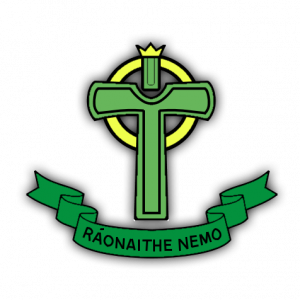
Coming Soon
PASSAGE
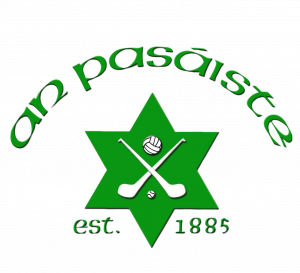
Coming Soon
RATHPEACON
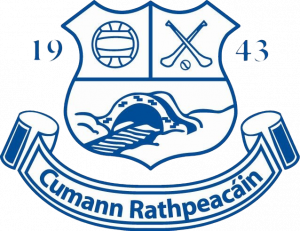
Rathpeacon GAA was founded in 1943 and competed for several years in the city division before going out of existence. The club was revived in 1960 and again played in the city division. Initially, the club competed in Minor and Junior levels but regraded to Junior B Championships in 1961. Football was the stronger code and after winning the City Junior B Football Championship in 1962, the club was promoted to the A grade. Rathpeacon contested the 1964 City Junior A football final only to be beaten by Na Piarsaigh by a single point. The footballers redeemed themselves a year later by beating Mayfield in the McSweeney cup final, winning their first Junior A title.
Many of the players played with the Seandún divisonal teams, most notably John Murphy, Jim Twomey, Pat Joe Sheehan, Pascal Goggin, Denis Murphy, Liam McAuliffe, and John Joe Kearney. Liam McAuliffe played with the Cork Minor hurling team in 1966 which lost the All-Ireland to Wexford after a replay.
The lack of youth coming through the ranks and the small population finally forced the club to fold once again in 1973. The club was re-founded in 1984 and after struggling initially, success came in winning the 1990 Seandún cup. The hurlers reached the County Hurling final in 1990, unfortunately losing to Harbour Rovers. The club won its first and only County championship in 1991. Our footballers beat Awbeg Rovers on a scoreline of 0-10 to 1-6.
The club has contested two football county championship finals and two hurling county championship finals since the turn of the Millenium. We have won three City football championships and two City hurling championships over the last twenty years and continue to do well each year in a tough city division and even tougher county division.
Rathpeacon LGFA was founded in 2022 and the story is only just beginning!
Roll of Honour:
- County Junior B football championship winners: 1991
- County Junior B football championship runners-up: 2003, 2004
- County Junior B hurling championship runners-up: 1990, 2010, 2012
- McSweeney Junior A cup winners: 1965
- City Junior B football championship winners: 1961, 1962, 2004, 2013
- City Junior B hurling championship winners: 1961, 1990, 2002, 2012
- City Junior C football championship winners: 2009, 2019
ROCHESTOWN
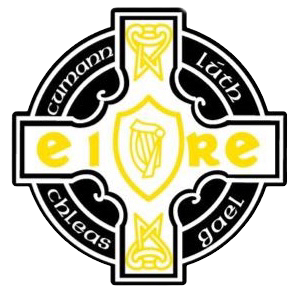
Coming Soon
ST. FINBARRS
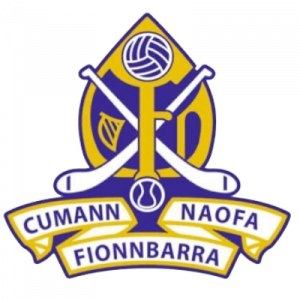
Coming Soon
ST. MICHAELS
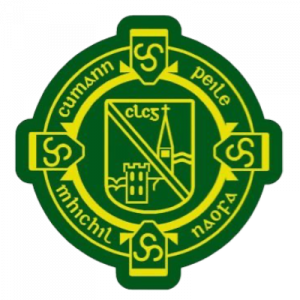
St. Michaels G.F.C. is a Gaelic football club in Cork City, Ireland. The club was formed in 1951 after a discourse in the Leaping Salmon bar in Blackrock. At that time, some of the Blackrock hurlers played football with different city teams and it was thought a good idea to enter a football team from the Blackrock area, thus keeping the players together. A formal meeting was held and St Michael’s Gaelic Football Club was born.
ST. NICHOLAS
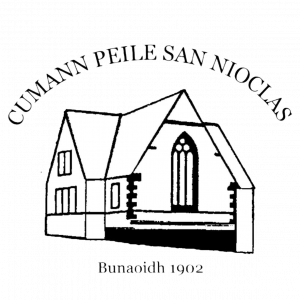
ST. VINCENTS
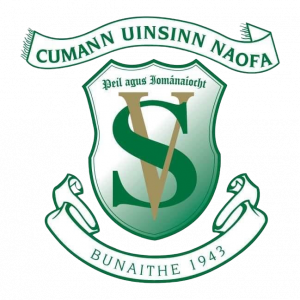
Coming soon
WHITECHURCH
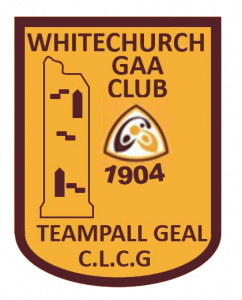
Whitechurch GAA Club was founded in 1904 to represent the eastern half of the Blarney parish. However, it went into decline after a few years due to troubled times. The club was revived in 1959 as a sister club to Blarney hurlers, and then hurling was revived again in 1984. From 1999 to 2011, the club was joined with White’s Cross, with the latter focused on football. In 2012, after much debate, Whitechurch reverted to being an independent dual club.
The club is proud to have won 9 county championship titles, all in recent years since becoming an independent club – 8 in hurling and 1 in football. The club has represented Cork in the national Féile u14 competition on four occasions (2011 in football and 2014, 2016, and 2019 in hurling).
2016 was a tremendous year in hurling for the club, winning the Féile A title, a county championship at the u16 level and the first ever county championship at adult level in Junior B. The team built on this success and went on to win the Munster and All-Ireland club titles in 2017.Whitechurch also won the 2019 All-Ireland Hurling Feile Shield competition for their division.
Today Whitechurch GAA Club is based in the Whitechurch Community complex. In recent years, the club has developed two new pitches, changing rooms ,a hurling wall and supported the building of a community gym to cater to the youth of the area. These facilities are excellent, and the club’s priority in the future is to focus on developing players, teams, and coaches so that the club can become the best it can be.
County Championship Honours
- 4 at U13 – 3 hurling (2011, 2012 and 2017) and 1 football (2012)
- 3 at under 14 hurling with Féile A in both 2013 & 2016 + county championship title in 2015
- 1 at under 16B hurling in 2016
- 1 at Junior B hurling in 2016
Munster Championship Honours
- Junior B hurling in 2017
All-Ireland Championship Honours
- Junior B hurling in 2017
- Under 14 Feile Hurling Shield 2019
WHITES CROSS

The current White’s Cross GAA club was formed in late 1957 with the club entering the East Cork league & championship and tournaments from 1958 onwards. Gaelic past-times, however, existed in the area dating back a long time prior to this. The Gaelic poet Seán ‘na Ráithíneach‘ O Murchadha (who spent time in working in Ballyphillip House) reported on a hurling games across the district in the 1740’s.
This was an era prior to the formation of clubs as we know them. Hurling games were sponsored by estate owners. From the period following the Act of Union (1801) to the great famine (1846-49), political tension saw landowners withdraw their support and the game of hurling had declined around the country save for a few areas where it survived – the area around Cork City was one such place. There is at least one record of a local curate who documented games being played in this area in the 1830’s.
When the Gaelic Athletic Association was formed in November 1884, it was not long after activity commenced in the parish. One of the the first ever Gaelic Football matches to be played in Cork under GAA rules was an exhibition match with a team named Glanmire playing against Fethard of Tipperary in July 1886 in Cork Park. Though sharing the name of the current club based in Riverstown/Sallybrook, Upper Glanmire had a big influence in the fact that the side would have met and trained in Upper Glanmire and were captained by Dan O’Neill of Piercetown who was one of several other players from the locality playing in that era.
A Glanmire based team (name had changed from Glanmire to Charles Underwood O’Connells) lasted until the early 1890’s prior to the formation of the Sarsfields club which continues to thrive today and serves the Lower Glanmire parish. When a degree of peace or normality was restored following the Civil War and War of Independence, an East Cork league was restarted in 1923. This is when a clear antecedent for the current club formed. A team called Upper Glanmire competed in this league from the beginning. Various teams called Upper Glanmire, St Michaels and, indeed, the first side named White’s Cross competed for approximately 15 years. They were particularly bouyant in the early 1930s.
1930’s Ireland though was blighted with emigration. These sides had all folded by 1938 and for 20 years there were no teams in the area. Younger players from Upper Glanmire school went and played underage with Sarsfields. Following some success there in the 1950’s a number of these players were part of a very young committee that met to form the current White’s Cross club in 1957. The new club started to compete in 1958 as a hurling-only club. A then prestigous, tournament was won in the opening year and a championship final was reached the following year. 1964 saw the club win its first ever official competition; the extremely competitive East Cork Junior A Hurling league.
A barren spell followed for a decade with little success. A strong football side emerged in the 1970’s as football in the East Cork region started it’s own meteoric rise. They reached four football finals in the decade which lead to them wining their first ever championship; the 1977 East Cork Under 21 B Football.
In 1982, they won their first ever hurling championship. A fallow period followed before a young team emerged which saw the club enter it’s most successful period heretofore. From 1990 to 1994 championships, leagues and cup competitions were won in both codes. They also reached their first ever county final which saw an injury depleted side lose out to Castlelyons.
At the turn of the millennium, following an EGM, the club decided to expand its amalgamation with Whitechurch from underage to adult level. White’s Cross played football under this arrangement while players transferred to play hurling with Whitechurch. This was immediately successful with White’s Cross winning trophies almost every year of the amalgamation. The club won 4 Junior A championships, 4 Junior A Leagues and a record 10 McSwiney Cups in succession. Their players also were part of Junior B hurling championship and Craobh Rua Cup winning-sides during this period.
White’s Cross formed its own juvenile club in 2011 while hurling returned to the club in 2012. There was success for both our underage and adult teams over the following years. This success culminated in 2018 which turned out to be the most momentous year for our club. Following a 2017 final defeat, the club won it’s first ever County Championship in July of that year beating O’Donovan Rossa in the final of B hurling championship. The same year saw their under 12s, 14s and 16s all winning their respective football championships with the latter two reaching county finals also.
The club now competes at Junior A level in both hurling and football. They have a thriving underage section for boys and girls and dynamic committees that are determined to advance the fortunes of the club on and off the field going forward.
